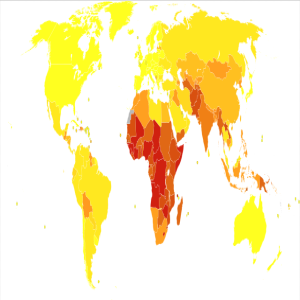Prevalence, case fatality rate and risk factors for mortality among neonates admitted with perinatal asphyxia at a tertiary hospital in northern Nigeria

Accepted: 15 September 2022
All claims expressed in this article are solely those of the authors and do not necessarily represent those of their affiliated organizations, or those of the publisher, the editors and the reviewers. Any product that may be evaluated in this article or claim that may be made by its manufacturer is not guaranteed or endorsed by the publisher.
Authors
Documenting the burden and the risk factors for perinatal asphyxia-related mortality is key to its prevention. The goal was to document the factors associated with mortality in perinatal asphyxia in a tertiary health facility in Nigeria. Records of consecutive neonatal admissions (between January 2016 and January 2017) underwent a retrospective analysis. Data were analyzed using Stata statistical software version 16 (Statacorp® Texas, USA). 102 (12.1%) of 841 admitted neonates had perinatal asphyxia; the median age (inter quartile range [IQR]) was 6 (0-168) hours. The mean admission weight ±(SD) was 2.96kg±(0.66) kg. Among inborn neonates, the incidence was 9.7 per 1000 live births. In 49% (50/102) pregnancies the amniotic fluid was clear; in 42% (43/102) it was meconium-stained; and 9 staining was unreported. Case fatality rate was 20.6% (21 of 102). 77(75%) neonates had no HIE, while 24 (24.5%) did. When compared to neonates without HIE, those with HIE II had about 7000 times higher odds of mortality (aOR = 68132.19, P0.01, 95% CI 3 to 1.4X 109). The adjusted odds of mortality for neonate with meconium-stained liquor were about 1900 times higher compared to clear meconium (aOR =1895, P = 0.02, 95%CI = 2.7 to 13072). Neonates with higher mean admission lengths (49.4cm [range = 48.8 to 50]) had 88 times lower odds of death compared to shorter neonates (aOR of 0.12 (95% CI: 0.17 to 0.85; p = 0.03).
Supporting Agencies
NoneHow to Cite

This work is licensed under a Creative Commons Attribution-NonCommercial 4.0 International License.
PAGEPress has chosen to apply the Creative Commons Attribution NonCommercial 4.0 International License (CC BY-NC 4.0) to all manuscripts to be published.

 https://doi.org/10.4081/pjm.2022.202
https://doi.org/10.4081/pjm.2022.202



